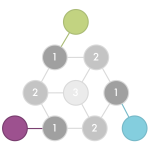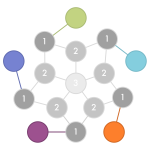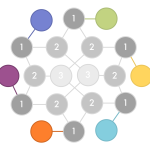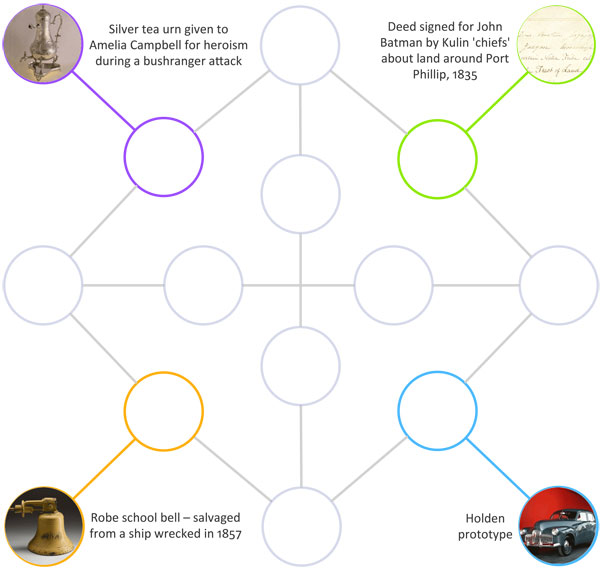On group size and complexity
Sembl works for lots of different sized groups. We reckon that playing in a team of two to four is ideal. Any fewer and the ideas might not flow freely; any more and you might have too little time with your hands on the device :)
Below you can see board designs for three, four, five and six teams. (So a single Sembl game can involve 6 to 24 players – and we can host multiple games simultaneously.) Each team starts with seed content occupying a coloured spot. In most boards, you have your own seed node to work from, but with the board for younger players – the last one, below – you share with another team. Numbers indicate which round of play that node becomes available.
In all of these designs, I’ve attempted to make the game enjoyably resolvable in an hour of play. Round 1 is always a warm-up. You’re not competing for the place on the board, you just need to find one thing that resembles your seed node, and explain how.
In Round 2, each node in contention is linked to two of the Round 1 nodes. With the simple board for four teams, that pattern continues into the final round. With the other boards, Round 3 requires you to find fewer nodes with more connections.
In Round 3 of a six-team game, you compete for two nodes, each of which is linked to three prior nodes. With the other boards, the aim of Round 3 is to occupy a single node, which is linked to either three, four or five others in accordance with the number of teams playing.
I’m fascinated by how the dynamic of the play shifts according to the number of nodes in contention (relative to the number of teams playing), and the number of prior nodes these nodes link to. The board for five teams is probably the most challenging. Not only are you competing with four other teams for a single node, your node must link to five prior nodes. It might push the limits of what’s achievable within the hour – or perhaps the peculiar pressure of such a game will inspire wondrous thinking!









